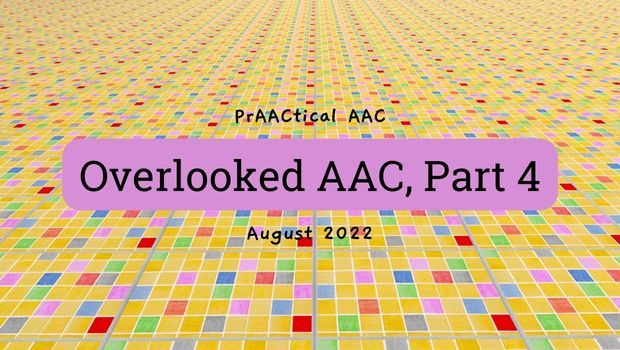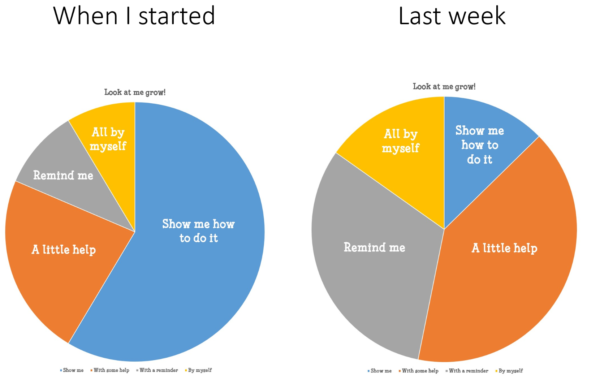Overlooked AAC, Part 4

Most employees have job descriptions that offer clarity about what is expected of them and what they are supposed to achieve.
Countless professionals work in fields where a Scope of Practice helps them know what they should and shouldn’t be aiming for.
Many students have syllabi and rubrics that show them what they’ll need to do for a particular course or assignment.
When people, organizations, and systems point us in the right direction, it’s easier for us to meet expectations and achieve goals. This holds true for individuals with AAC needs as well, but professionals often have so many competing priorities that we don’t always make a plan for how to do it. And when we do, we don’t always have the time and bandwidth to fully implement it.
Today, we continue the Overlooked AAC series with a look at things that professionals often miss in supporting AAC users when it comes to their treatment and/or educational goals. Earlier in this series, we addressed things we sometimes miss in three areas:
- Creating and maintaining a system for backing up AAC devices/apps,
- Developing and implementing tools to help new people better understand how to support an AAC user, and,
- Preparing for and dealing with transitions.
It’s easy to overlook certain aspects of AAC goals, too. As we think about goals and objectives, how can we do a better job at centering children and adults with AAC needs? Here are a few ideas.
Involve clients/students in the goal-setting process. Professionals bring a great deal of knowledge and expertise that are critical in establishing goals and objectives. That’s only part of the equation, though. To make meaningful change, those who use AAC should routinely have the opportunity to give input so that the final goals reflect their priorities, preferences, and needs. Some individuals with complex communication needs have little or no difficulty suggesting skill areas to target, weighing in on suggested goals, and sharing thoughts on various aspects of the goal. For many AAC users, though, this is quite a challenge. Not an insurmountable one, though. They can be taught to use tools like rating scales and supported with processes like Talking Mats. It may take a while for some individuals to learn to use these strategies, but the payoff at the end is a big one. Not only will they be able to influence the direction of AAC support they’ll receive, but the flexibility of these strategies allows them to have a voice in many other situations as well.
Give them vocabulary and messages to make it easier for them to advocate for this information. “What are my goals?” “Why are we doing this?” “I don’t understand the purpose of this. Please explain it to me.”
Use visual supports to remind everyone of the session goals. When this is first introduced, spend time discussing the goals for the session (e.g., what it means, what will happen, why each one is relevant). Whether it is a hand-written sheet of paper, notes on a whiteboard, or something more Pinterest-worthy, keep the goals visible throughout the session and refer to them periodically.
Share the data in ways that are appropriate and meaningful. Charts, graphs, and pie charts can be useful ways to provide information on progress.
 Some days, it seems like there are a million things to attend to in our AAC support journey, and it’s not unusual to leave work with many things still on our To Do list. When we’re short on time or overwhelmed by the scope of our AAC responsibilities, it’s natural to postpone things that don’t have a solid due date and aren’t being asked for by our workplace supervisors. We hope this post inspires some of you to put this on your Action Plan.
Some days, it seems like there are a million things to attend to in our AAC support journey, and it’s not unusual to leave work with many things still on our To Do list. When we’re short on time or overwhelmed by the scope of our AAC responsibilities, it’s natural to postpone things that don’t have a solid due date and aren’t being asked for by our workplace supervisors. We hope this post inspires some of you to put this on your Action Plan.
Filed under: Featured Posts, PrAACtical Thinking
This post was written by Carole Zangari
